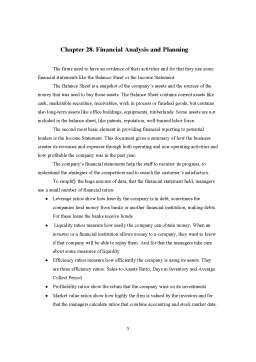Extras din proiect
The small ventures are not corporations. They can be managed by a single individual. These are called sole proprietorships. When several people may join to own and manage a firm, that firm is a partnership.
The corporation is a legal entity that is separate and distinct from its owners. A corporation is allowed to own assets, incur liabilities, and sell securities, among other things. Almost all large and medium-sized businesses are organized as corporation. The firm is owned by stockholders who hold shares in the business.
There are two types of corporation:
- when the corporation is small and it is at the beginning of her activity and its shares may all be held by a small group of investors, perhaps the company’s managers, the corporation is closely held; in this case the shares are not publicly traded.
- when the firm is extended and the shares are used to raise the company’s capital, the corporation is known as public companies; in this case the shares are widely traded.
The corporations have three important features:
- first, the owners of a corporation are not usually the managers; this separation gives corporation permanence because if managers quit or are dismissed can survive, without disrupting the operations of the business.
- second, corporations have limited liability , which means that shareholders are not responsible for the firm’s debts. If the company goes bankrupt the shareholders lose only the sum they invested, but they don’t need the pay the company’s debts.
- third, the corporation is legally distinct from their owners and, because it is considered as a resident of its state, pays its own taxes.
The corporation has some advantages: can raise money by selling new shares to investors and it can buy those shares back, the corporations can interfuse with another follow-up a bid.
But it has also some disadvantages: the corporation is taxed separately because it is a separated legal entity and the companies can lose a lot of money and time with their management and with the transmission of the information between managers and shareholders.
Corporations need a wide variety of real assets. These real assets are two forms: tangible- machinery, factories, offices, and intangible- technical expertise, trademarks, patents.
In contrast with such real assets are financial assets, such as stocks and bonds. Such securities are no more than sheets of paper or, more likely, computer entries and do not contribute directly to the productive capacity of the economy. Instead, these assets are the means by which individuals in well-developed economies hold their claims on real assets.
The financial manager stands between the company’s operations and the financial markets. He follows the flow of cash from investors to the firm and back to the investors again. The obligation of the financial manager can be divided into the investment, or capital budgeting, decision when the firm has to decide what real assets to buy, and the financing decision when the firm has to decide how to raise the necessary cash.
The financial manager is the one who must decide what investments the company needs to make, but also where those invested assets should be placed.
The financial manager is someone responsible for providing financial advice and support to clients to enable them to make sound business decision. In small firms is a single person responsible for all the decisions. Big companies have involved the top management in financial decisions.
In small firms is only one financial executive, the treasurer. The treasurer is responsible for the cash management, the raising capital, banking relationships. Larger companies have both a treasurer and a controller. The controller is responsible for the preparation of financial statements, the accounting and the taxes. In larger corporations are also a chief financial officer (CFO) and he oversee the treasurer’s and the controller’s work. The CFO is responsible for the financial policy and the corporate planning.
In large business, where there is a separation between owners and management, the owners can’t be actively involved in management and for that the authority has to be delegated to managers.
Preview document
Conținut arhivă zip
- Finance and The Financial Management - Financial Analysis and Planning.doc





















